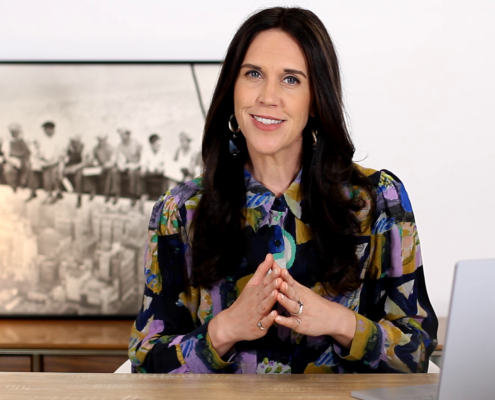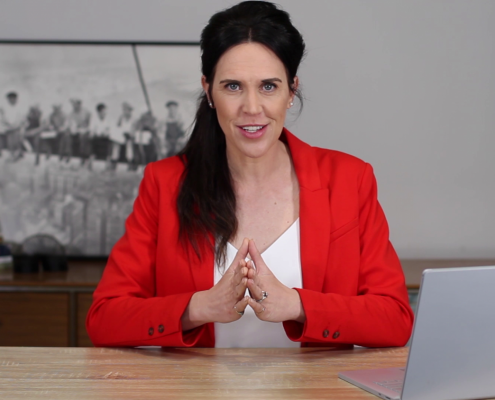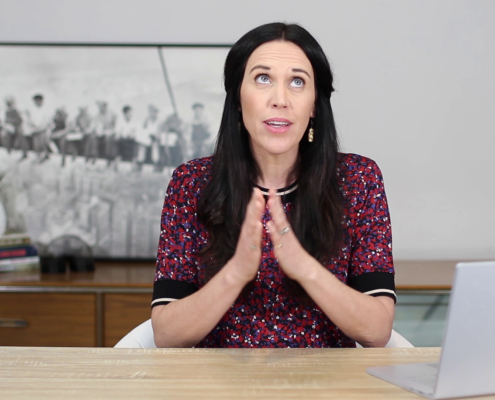“I still can’t work out how it could have happened … Ardent had very strong culture of safety. It had a safety committee which included directors and various executives involved with safety issues at the operating levels. The committee met regularly and reported very frequently to the board”
Chair Ardent Leisure
This was the statement made by Neil Balnaves after the tragic incident at Dreamworld in 2016 that killed 4 people.
While Australia has experienced fewer deaths in the workplace over the last decade, in fact, a 49% reduction since a peak in 2007, as at the end of December 2017, there were still 175 people who didn’t go home at the end of the workday.
- This means one person died at work every 2nd day, and this doesn’t even include the number of people whose mental health has suffered or is suffering as a result of their work.
In the U.S.A, fatality figures for 2016 were 5,190 workers killed on the job (3.6 per 100,000 full-time equivalent workers).
- On average, more than 99 deaths a week or more than 14 deaths every day.
Provisional figures in Great Britain suggest that a total of 137 workers were killed at work in 2016/17.
So, as you can see, we still have a significant problem globally, regardless of annual improvements.
But perhaps more relevant to you, if you have never experienced a workplace fatality or someone with severe mental ill-health, is the question of whether your organisation is any different to those that have.
Why Business Leaders Should Read This
I would argue that many of the senior leaders in organisations that have experienced the above, were completely caught off-guard. I would argue this even more so, for those on the board due to their removal from day-to-day operations.
So, what makes your organisation different and perhaps immune to these tragedies?
I’m willing to bet, the answer is VERY LITTLE.
The problem is, you don’t know, what you don’t know.
If directors were more equipped with how to lead safe & healthy work in the boardroom, there would be a significant decrease in the number of fatalities, long term disabilities and mental ill-health in the workplace.Click To TweetIn this week’s post, I debunk four myths that I have seen and experienced from directors as to what is, and the importance in, executing health & safety governance.
Myth #1: Board experience is enough to execute health & safety governance
While the principles underpinning health and safety governance are no different than any other aspect of a governance role …. There are concepts, language, systems, relationships that need to be well understood by directors in order for them to know what to ask, and when to act.
Why is this important?
For starters, many routine business decisions have unintended, and often unrecognised, health & safety consequences. Health & safety concepts stem from their inextricably interwoven relationship with other aspects of business activity.
Understanding all of the above enables company officers to appreciate how their individual decisions and actions can – positively or negatively, consciously or unconsciously – influence risk factors that drive health & safety performance.
Research conducted by Safe Work Australia, over a 3-year period, suggests health & safety due diligence training for most company officers has focused on legal exposure and has failed to provide this group with a general understanding of health and safety (e.g. language, concepts and evidence-based research) and most importantly how their decisions influence health & safety outcomes.
Now I know that many of you reading this may sit on multiple boards and may have years of board experience under your belt; what I also know is that there is very little publicly offered training for directors on health & safety governance and my experience, research and discussions with directors has shown me that very few directors have had training on how to lead safe & healthy work in the boardroom.
The more informed you are about what you need to know and when you need to act, the more positive your influence will be on the health & safety performance of your organisation and the lives of those who work in it.
Myth #2: The less I know, the better
A comparison of director duties across Australia, Canada, France, Germany, Italy and Japan in workplace health & safety found that most of these countries place health & safety duties upon individuals who will either be a person who is a company director or a director equivalent (i.e. an officer of the company). While the U.S.A was not included in the comparative study, I can confirm it is also a country that imposes a legal obligation on directors to ensure health & safety at work.
Based on the above, we know you likely have a legal obligation if you operate in any of the above countries, to keep those who work in the business safe and healthy.
Directors may even be held personally liable – in fact, there is no need, at least in Australia and New Zealand, to tie a director’s failure to any particular failure or breach in the business for the director to be prosecuted.
Some jurisdictions do not impose duties on directors on the face of the legislation, as in the UK, but do it indirectly through the creation of the offences. By defining particular conduct as criminal, the offences indirectly impose a duty upon the director either not to conduct themselves in a particular way, or to do something positive in order to prevent the commission of the offence.
In Australia and New Zealand, the legislation outlines what steps are needed to ensure due diligence – these are referred to as ‘positive obligations’ and must be seen to be undertaken (i.e. there is no excuse for a director to say they did not know what was meant by ‘due diligence’). This was introduced in the Model Work Health & Safety Act 2011.
I have also had the pleasure of working with very good health & safety lawyers throughout my health & safety professional career, and my clients are always gobsmacked when they find out the amount of potential evidence needed to mount a defence if they were to be prosecuted.
Of particular interest to my clients has been the breadth of questioning that the Regulator can inflict on the board to gain a better understanding as to whether due diligence has been fulfilled by EACH member of the board (I’ve been advised this can be hundreds of questions for each director to answer individually). The Regulator is within its right to take all of the answers provided by each director, compare the answers for consistency in approach and find the holes to probe further – there is no safe harbour for directors when it comes to leading safe & healthy work.
With the above in mind, I think you’d agree, there is a strong argument that the less I know the better, will not hold up as a defence.
Myth #3: We have a health & safety manager or inhouse team that tell me what I need to know
I would agree that many directors should look to a very professional, well trained and educated health & safety manager to provide them with advice on what they need to know and when they need to act; however, are you’re willing to put all your eggs in one basket?
For example, I mentioned above, directors can be held personally liable for failures in workplace health & safety and there is no safe harbour for directors in they contravene the legislation.
So, at the very least, I implore you seek out training that educates you in what to ask and when to act, so you know you are getting the information and context that will help you comply with your obligations, make strategic decisions and have an active positive influence on your organisational health & safety performance.
Myth #4: We have applied the same governance structure used in another business where I’m a member of the board
While that’s great to hear that you have a health & safety governance structure in place, it is important that you tailor the structure to each business.
Remember how I said above that health & safety concepts stem from their inextricably interwoven relationship with other aspects of business activity … well, this is why it’s important to understand the key components to a health & safety governance structure – particularly how each component contributes to directors fulfilling their legislative obligations and governance and leadership responsibilities, and drives positive health & safety performance.
This last point is important in debunking myth #4. If you understand the ‘why’ (e.g. why you have the indicators you have, why your organisation’s WHS management system functions the way it does – which may be different, by the way, to another organisation’s WHS management systems, why you audit what you audit), then you can apply your knowledge of the framework and tailor it to any business you govern.
For example, you don’t want to take the same reporting indicators and apply those blanketly to any business that you’re on the board of.
Now that you know the 4 Director Health & Safety Governance Myths, I’ve created a free resource that will assist Directors in leading health & safety governance in the boardroom.
From my work with directors in understanding and applying health & safety governance, my wish for you is to know the essential elements in a health & safety governance framework and how each component assists you in compliance and fulfilling your governance and leadership responsibilities.
CLICK HERE to get your copy of my Director Cheatsheet!
As always, I aim to assist you in knowing What to Ask and When to Act. #knowWTA
Welcome!
I’m Samantha
I teach board members and executives how to lead with heart and put people first, by leading safe & healthy work. Stick around and I’ll share with you the skills, knowledge and mindset you need to know what to ask, and when to act and lead with confidence.
RESOURCES
YOU MAY ALSO LIKE…
FEATURED CONTENT
[text-blocks id=”4249″ plain=”1″]









Let us know what you have to say:
Want to join the discussion?Your email address will not be published.